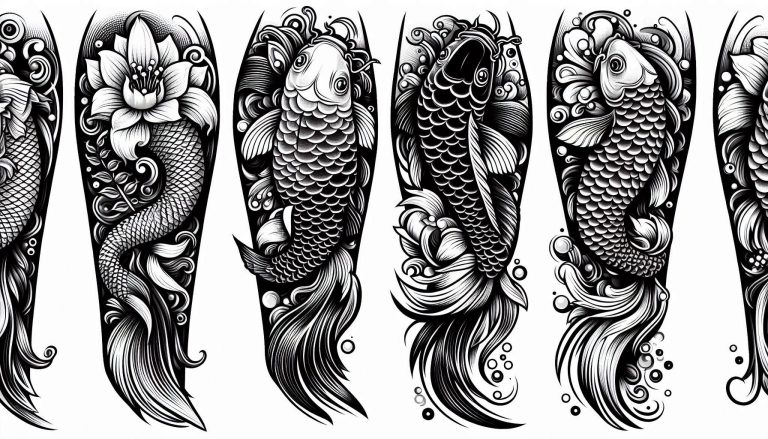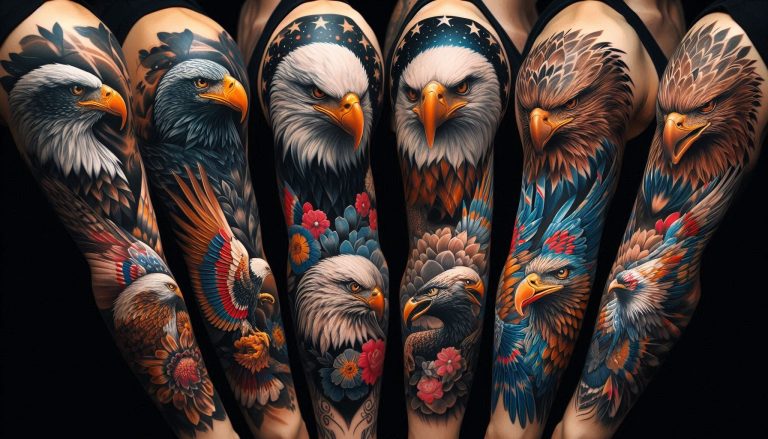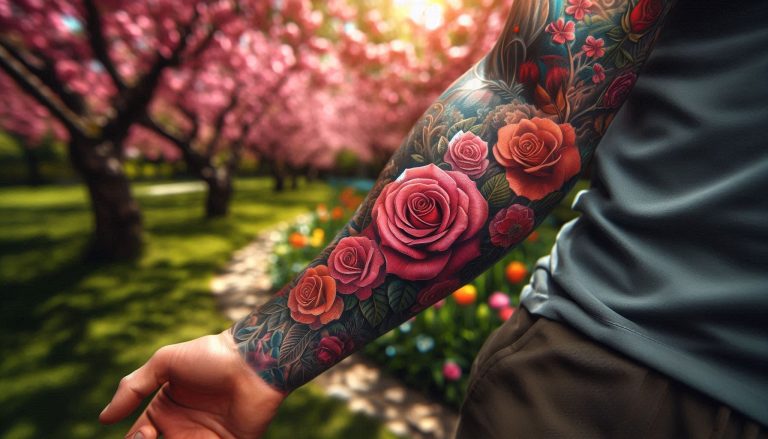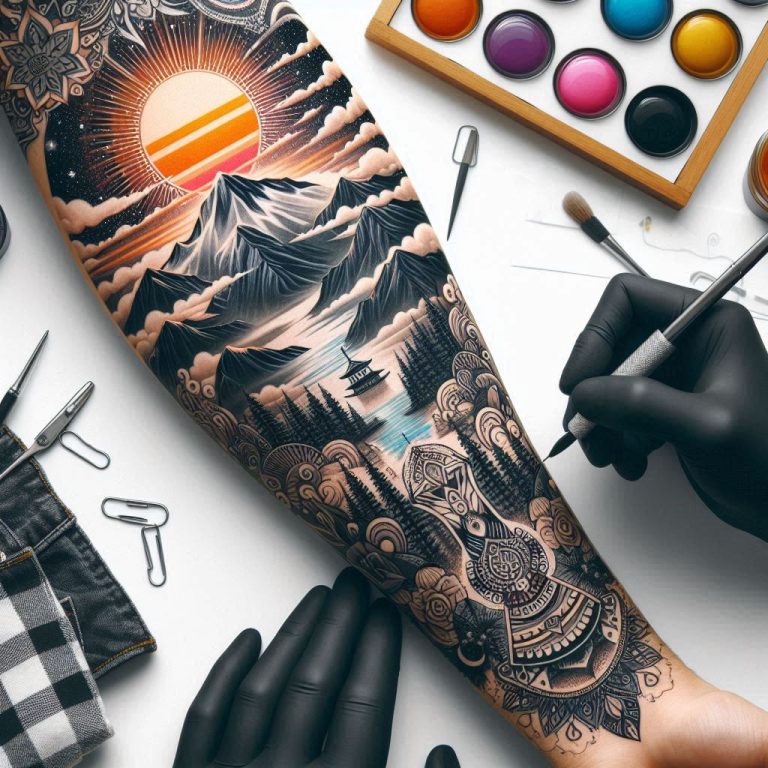
Exploring the Art and Symbolism of Geometric Tattoos
The precision, symmetry, and profound symbolic connotations of geometric tattoos have made them a mainstay of contemporary body art. These designs, which have their roots in antiquated customs and have been revived by modern artists, provide a special fusion of artistic expression and mathematical beauty. In order to understand why geometric tattoos are so popular with a wide range of audiences, this article explores the tattoos’ history, prominent artists, motivations, advantages, disadvantages, and cultural importance.
Geometric Tattoo
The use of exact shapes, like squares, triangles, hexagons, and circles, organized in symmetrical or repeating patterns to produce eye-catching designs is what defines a geometric tattoo. Sacred geometry, a tradition that gives spiritual meaning to mathematical proportions found in the world and in nature, is frequently referenced in these tattoos. Geometric tattoos are adaptable, enabling customization that expresses the wearer’s identity, values, or aesthetic tastes. They can range from simple single forms to complex, expansive designs. Those looking for a contemporary, classic style that is distinguished by its elegance and clarity will find its crisp lines and well-defined shapes appealing.

History of Geometric Tattoos
Geometric patterns were given cultural and spiritual value in ancient cultures, which is where the origins of geometric tattoos can be found. Geometric tattoo patterns were employed by indigenous tribes, including the Polynesian and New Zealand Maori, to represent identity, status, and a connection to nature. Because they were thought to provide protection, geometric shapes were utilized in religious ceremonies in ancient Egypt. When artists like Dillon Forte combined old tribal motifs with modern techniques, they created a unique style that became popular all over the world, sparking the modern renaissance of geometric tattoos in the late 20th century. This combination of contemporary accuracy and age-old symbolism has solidified geometric tattoos as a vibrant art form.
Geometric Pattern Tattoo
Intricate designs and repeating shapes are highlighted in geometric pattern tattoos, which frequently give the skin a sense of harmony and rhythm. Mandalas, which stand for harmony and balance, or Metatron’s Cube, a revered geometric representation of the universe, may be incorporated into these tattoos. The patterns offer countless customizing options, ranging from straightforward dotwork to intricate fractals. For people who appreciate structure and deeper philosophical or spiritual connotations, geometric pattern tattoos that combine forms like spirals, hexagons, or interlocking knots inspire a sense of order and interconnectedness.

Notable Artists in Geometric Tattoos
With their creative techniques, a number of artists have raised the bar for geometric tattoos. Texas-based artist Dillon Forte is well known for fusing natural elements with sacred geometry to create elaborate artworks that represent spiritual and emotional journeys. Drawing inspiration from mystical and cultural motifs, London-based tattoo artist Tomas Tomas specializes in esoteric and mathematically accurate designs. Amsterdam-based artist Maxime Etienne creates vivid, intricate creations by fusing geometric patterns with bizarre imagery. Through their distinct techniques, these and other performers have pushed the genre’s boundaries and demonstrated its depth and variety.
Why People Choose Geometric Tattoos

For a number of reasons, including their aesthetic appeal and metaphorical significance, people are drawn to geometric tattoos. Since forms like the Flower of Life or Sri Yantra have symbolic meanings of harmony, creativity, and balance, many people use these designs to convey their particular views or spiritual ties. Others are drawn to their striking appearance, valuing the symmetry and crisp lines that set them apart. Additionally, geometric tattoos are a means of self-expression, enabling people to share their stories with personalized designs that honor their beliefs, ancestry, or life events. Some see the tattoos as a means of embracing their uniqueness and deviating from societal norms.
Benefits of Geometric Tattoos
The many benefits that geometric tattoos provide help explain why they have been popular for so long. Unlike trend-driven tattoos that may lose their appeal over time, their classic design guarantees that they will continue to be aesthetically pleasing for decades to come. Because of their adaptability, geometric forms may be customized in countless ways to suit a wide range of tastes, from simple dots to intricate sleeves. Additionally, these tattoos may have deep cultural or personal meanings that promote empowerment and a feeling of self. Furthermore, when created by talented artisans, their structured patterns frequently age well, retaining their clarity and vibrancy with the right maintenance. Many people find emotional stability in the peaceful, harmonizing influence of geometric designs.
Cons of Geometric Tattoos
Geometric tattoos have significant disadvantages despite their popularity. Because their elaborate designs demand a great deal of accuracy, selecting a skilled artist is crucial to preventing distorted shapes or uneven lines, which can detract from the tattoo’s aesthetic appeal. Longer sessions and greater expenses may result from these tattoos’ intricate designs, especially for intricate designs. Touch-ups are necessary because delicate lines and dotwork may eventually fade or blur, especially on regions exposed to sunlight. Furthermore, in conservative settings where visible tattoos are less acceptable, some people may experience social stigma, which could affect their interactions in both personal and professional contexts.
Geometric Tattoo Designs

From abstract compositions of lines, dots, and polygons to holy geometry symbols like Metatron’s Cube and the Flower of Life, geometric tattoo designs come in a variety of forms. Mandalas, which stand for spiritual unification, and animal silhouettes made from geometric shapes—like a wolf or deer—that indicate strength or vitality are examples of popular patterns. Other patterns include knotwork, which suggests connection and problem-solving, or spirals, which represent development and reflection. These patterns can be simple or intricate, black-and-grey or vibrant, enabling people to make tattoos that express their particular stories and aesthetic preferences.
Geometric Tattoo Design
Form and meaning are expertly balanced in a single geometric tattoo design. For instance, a triangle may stand for strength or change, while a circle could symbolize eternity and totality. Designs that represent creation and connectivity include the vesica piscis, which is made up of overlapping circles. To increase the visual impact of a design, artists frequently employ techniques like dotwork, blackwork, or negative space. The significance of the tattoo can be further enhanced by its placement, whether it is on the wrist, forearm, or back; smaller spaces work better for minimalist shapes, while bigger regions can accommodate more intricate designs. Working with a talented artist guarantees that the wearer’s vision is reflected in the design.
Top Personalities with Geometric Tattoos
Although specifics of celebrities who have geometric tattoos are frequently kept confidential, a number of well-known people are known to have elaborate body art that complements this aesthetic. Rihanna’s outspoken attitude is reflected in the geometric henna-inspired tattoo on her hand, which combines traditional motifs with contemporary symmetry. In his vast tattoo collection, Adam Levine, the frontman of the Maroon 5, uses geometric motifs, including structural designs that go well with his artistic persona. Zoe Kravitz is well-known for her simple tattoo designs, some of which incorporate delicate geometric elements like dots and lines, perfectly capturing her modest yet imaginative aesthetic. These individuals demonstrate how geometric tattoos can improve self-expression in a variety of public personas.
Movies Featuring Geometric Tattoos
Although they aren’t necessarily the main attraction, geometric tattoos can be seen in movies that deal with identity, spirituality, or revolt. Lisbeth Salander is featured in “The Girl with the Dragon Tattoo” (2011). Her body art, which includes structured designs, shows her rebellion and complicated nature. The title character in the 2014 film “John Wick” has tattoos that allude to his enigmatic history and disciplined personality, including geometric designs. As a narrative technique for the protagonist’s memory loss, “Memento” (2000) used tattoos, some of which are geometrically precise, to represent order in the midst of chaos. These movies demonstrate how, even when not specifically referred to as such, geometric tattoos can express deeper character traits and thematic components.
Conclusion
With roots in ancient customs and a vibrant presence in contemporary culture, geometric tattoos symbolize a profound convergence of art, mathematics, and self-expression. Their history includes both indigenous customs and more recent inventions, propelled by artists that combine creativity and accuracy, such as Dillon Forte and Tomas Tomas. These tattoos are popular because of their rich symbolic meaning, artistic adaptability, and capacity to convey original tales of spiritual convictions or significant life events. Challenges include the requirement for expert creativity and possible fading over time balance the advantages—timelessness, customization, and emotional resonance. Movies like John Wick and Memento highlight their narrative power, while celebrities like Rihanna and Adam Levine show their appeal to a broad audience.In the end, geometric tattoos are a tribute to people’s obsession with meaning, symmetry, and patterns; they provide a platform for personal expression that is timeless and unaffected by fashion. Whether it’s a straightforward circle or a complex mandala, these patterns encourage both users and onlookers to discover the elegance of structure and its hidden meanings.





